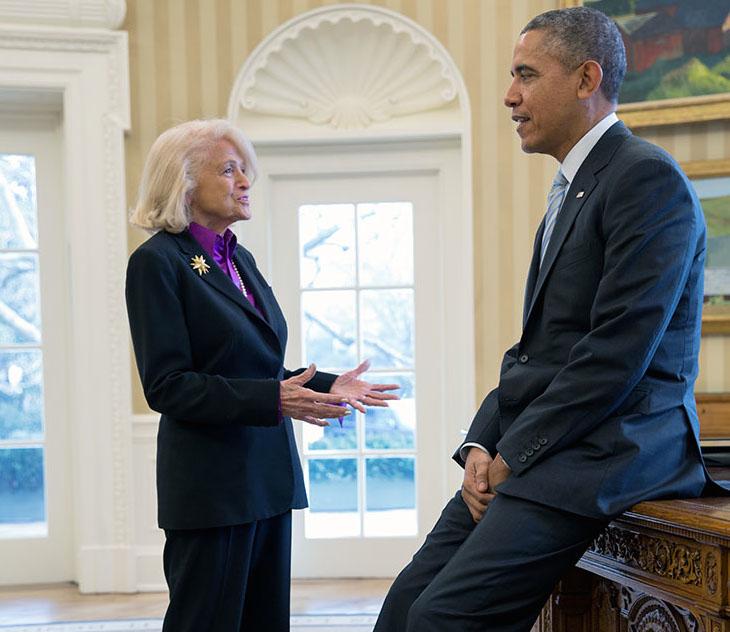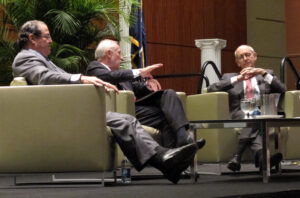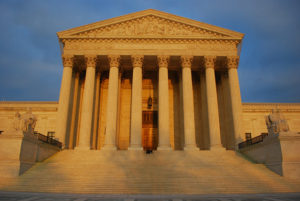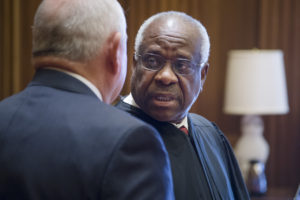Edith Windsor, Who Helped End the Ban on Gay Marriage, Dies at 88
The opinion in a suit she filed was the basis for federal court rulings against state prohibitions and led to a 2015 Supreme Court decision allowing same-sex couples to marry. Edith Windsor with Barack Obama in February 2014. (Official White House Photo by Pete Souza)
Edith Windsor with Barack Obama in February 2014. (Official White House Photo by Pete Souza)
NEW YORK — Edith Windsor, a widow who brought a landmark Supreme Court case that struck down parts of a federal law that banned gay marriage and led to federal recognition for same-sex spouses, died Tuesday. She was 88.
Windsor died in New York, said her lawyer, Roberta Kaplan. The cause of death wasn’t given, but Windsor had struggled with heart issues for years.
“The world lost a tiny but tough-as-nails fighter for freedom, justice and equality,” said her current spouse, Judith Kasen-Windsor. They married last year.
Windsor became a gay rights pioneer after her first spouse, Thea Spyer, died in 2009. The women had married legally in Canada in 2007 after spending more than 40 years together.
Windsor sued the federal government after Spyer’s death, saying its definition of marriage as a relationship between a man and a woman prevented her from getting a marital deduction on Spyer’s estate. That meant she faced a huge tax bill that heterosexual couples would not have.
The U.S. Supreme Court ruled 5-4 in June 2013 that the provision in the law was unconstitutional, and that legally married same-sex couples are entitled to the same federal benefits that heterosexual couples receive.
The opinion gave the nation’s legally married gay couples equal federal footing with all other married Americans and marked a key moment of encouragement for gay marriage supporters confronting the nationwide patchwork of laws that, at the time, outlawed such unions in roughly three dozen states.
It also affronted conservatives who hewed to defining marriage as between a man and a woman. Then-Supreme Court Justice Antonin Scalia predicted the ruling would be used to upend state restrictions on marriage and warned: “The only thing that will ‘confine’ the court’s holding is its sense of what it can get away with.”
Ultimately, the opinion in Windsor’s case became the basis for the wave of federal court rulings that struck down state marriage bans and led to a 2015 Supreme Court ruling giving same-sex couples the right to marry.
“She will go down in the history books as a true American hero,” Kaplan said. Anthony Romero, executive director of the American Civil Liberties Union, called Windsor “one of this country’s great civil rights pioneers.”
“One simply cannot write the history of the gay rights movement without reserving immense credit and gratitude for Edie Windsor,” Romero said.
Windsor said she was “honored,” ”humbled” and “overjoyed” when the decision came down. According to The New Yorker magazine, she called a friend and said, “Please get married right away!”
She was a finalist for Time magazine’s Person of the Year in 2013 (Pope Francis ultimately got the honor) and was invited the next year to a state dinner at the White House, honoring then-French President Francois Hollande.
Windsor was born in Philadelphia and moved to Manhattan in the early 1950s after a brief marriage to a man that ended after she told him she was gay.
She received a master’s degree in mathematics from New York University in 1957 and went to work for IBM in senior technical and management positions.
Spyer came into her life in 1963, and they became a couple two years later. In court documents, Windsor said she told Spyer, “‘If it still feels this goofy joyous, I’d like us to spend the rest of our lives together.’ And we did.'”
Concerned that an engagement ring would bring unwanted attention to Windsor’s sexual orientation from colleagues at IBM, Spyer gave Windsor a diamond brooch.
“Our choice not to wear traditional engagement rings was just one of many ways in which Thea and I had to mold our lives to make our relationship invisible,” Windsor said in court documents.
“We both faced pressures not only in the workplace and in society at large, but also from family and friends,” she added. “Like countless other same-sex couples, we engaged in a constant struggle to balance our love for one another and our desire to live openly and with dignity, on the one hand, with our fear of disapproval and discrimination from others on the other.”
Spyer was diagnosed with multiple sclerosis in 1977, and her physical condition deteriorated over the decades. The women married in Canada when they realized they might not be living when New York state legalized same-sex marriage, which it did in 2011.
Windsor also had had health problems for years. After Spyer’s death in 2009, she had an attack of stress cardiomyopathy, also known as broken heart syndrome, that was so bad that her heart stopped.
___
Associated Press writer Jennifer Peltz contributed to this report.
Your support matters…Independent journalism is under threat and overshadowed by heavily funded mainstream media.
You can help level the playing field. Become a member.
Your tax-deductible contribution keeps us digging beneath the headlines to give you thought-provoking, investigative reporting and analysis that unearths what's really happening- without compromise.
Give today to support our courageous, independent journalists.





You need to be a supporter to comment.
There are currently no responses to this article.
Be the first to respond.